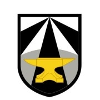ORGANIZATION
Army Futures Command
Army Futures Command (AFC), headquartered in Austin, Texas, is the U.S. Army’s innovation-focused major command. Established in 2018, it unifies modernization efforts—spanning technology discovery, prototyping, and requirements development—to ensure the Army remains ahead of emerging threats. AFC empowers Soldiers and teams to drive continuous transformation and capability dominance.
Formed in 2018, Army Futures Command is the newest Army command, laser‑focused on future preparedness. With over 17,000 personnel across the globe, AFC unites science, technology, acquisition, and concept development under one structure. Its cross‑functional teams tackle priority modernization areas—like long‑range fires, next‑gen combat vehicles, AI, and soldier lethality—through rapid prototyping, experimentation, and agile requirements generation. AFC ensures the Army doesn’t just respond to threats but anticipates and shapes tomorrow’s battlefield.
WORKARMA INDEX
Workarma promotes workplace well-being for employees and employers. The Workarma Index is derived from a blend of publicly available and proprietary data.
Workarma Index (WI)
WORKARMA INDEX
Workarma promotes workplace well-being for employees and employers. The Workarma Index (WI) is derived from a blend of publicly available and proprietary data. We break down workplace well-being into five different factors: Protection, Work, Connection, Balance, and Growth - that together make up the WI for that company.
Workarma Index (WI)
COMPANY INFORMATION
Details
STOCK INFORMATION
Description
Army Futures Command (AFC) is the Army’s primary modernization engine. Headquartered in Austin, Texas, with more than 17,000 personnel globally, AFC was established in 2018 as the fourth major command alongside FORSCOM, TRADOC, and AMC. Its foundational mission: to transform the Army and ensure war‑winning future readiness.At the heart of AFC’s structure are cross-functional teams (CFTs)—integrated units that bring together requirements, acquisition, science, test, and sustainment experts to forge rapid capabilities. CFTs tackle top priorities, including long‑range precision fires, next‑gen combat vehicles, future vertical lift, expeditionary networks, air and missile defense, and soldier lethality. The goal: shorten the path from concept to battlefield deployment.AFC’s Futures and Concepts Center (FCC) plays a critical role, conducting deep exploration into future operational environments. Using experimentation, concept development, and rigorous requirements analysis, FCC sets the strategic trajectory for Army modernization.This command drives rapid prototyping and iterative experimentation, embracing a “fail‑fast” mindset to refine ideas before formal acquisition. Through partnerships with PEOs and industry under Other Transaction Authority, AFC supports accelerated development of systems like hypersonic weapons, robotic combat vehicles, and integrated soldier systems.AFC also champions software and AI development. It oversees a Software Factory in Austin, nurturing soldiers and civilians as coders, product managers, and UX designers. It supports the Army AI Task Force and software innovation labs to infuse cutting‑edge digital capability across the force .With a clear timeline—achieving a Multi‑Domain Operations‑capable Army by 2028 and full readiness by 2035—AFC ensures the Army doesn’t just adapt, but leads the future battlefield. In sum, Army Futures Command is driving a revolution—uniting people, technology, and acquisition processes—to safeguard America’s competitive edge in warfighting innovation.
Mission
Read more

Better work, more karma.
Copyright @ 2025 Scrypt, Inc. dba Workarma. All rights reserved.





